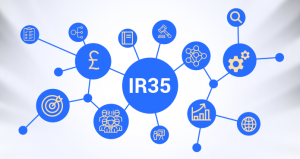As a self-employed individual, you've no doubt heard of the much-discussed IR35 legislation. This can have a significant effect on your personal and business financial situation as it alters the way in which members of the workforce receive their income. It's important to ensure that you fully understand what IR35 is and how it works so that you can make an informed decision on whether it applies within your working environment. In this blog post, we dive into everything inside and outside of IR35 - from definitions through to implications for freelancers and self-employed workers - providing essential information for any freelance worker interested in protecting their financial interests.
What is IR35?
IR35 is legislation that falls under the UK's Tax Avoidance Scheme (TAS). It was introduced in 2000 to ensure that those who are genuinely self-employed pay the same income tax and National Insurance contributions as an employee would. It works by assessing whether or not a worker is providing their services as part of a successful business and if so, the contractor would be considered 'inside' of IR35.
What Does Outside Of IR35 Mean?
If a freelancer or self-employed worker is deemed to be outside of IR35, it means that they are not operating as part of an incorporated business and as such will not have to pay the same tax obligations as an employee. Instead, they are working on their own without the need for a third-party business or organisation. This type of work can be beneficial for those who wish to remain flexible and self-reliant in terms of how they approach their career.
Is it Better to be Inside or Outside of IR35?
The answer to this question depends on the individual's goals and circumstances. Being inside of IR35 is beneficial for those who want the stability of regular employment but it also means that they will have to pay income tax and National Insurance contributions at a similar rate to an employee. On the other hand, being outside of IR35 can be more advantageous for those who are looking for more freedom and flexibility in their work. However, it is important to note that the tax implications of being outside IR35 can be more complex and must be thoroughly researched before making a decision.
Determining of Being Inside or Outside of IR35
There are several factors that need to be taken into account when deciding whether or not you are inside or outside of IR35. These include the amount of control you have over your work, any restrictions on what you can do, how and where you deliver services, if there is an overarching business structure and if the contract pays for your services without providing any other benefits.
In addition, the HMRC have released their own set of guidelines to help contractors and freelancers determine whether they are inside or outside of IR35. The rules are known as 'Supervision, Direction or Control' (SDC) – a set of criteria that assesses the relationship between worker and employer.
Conclusion
It is vital for self-employed individuals to understand what IR35 means and how it affects them. Making the decision whether to be inside or outside of IR35 can have a significant impact on your financial situation, so make sure you have fully researched the rules and implications before making your choice.












